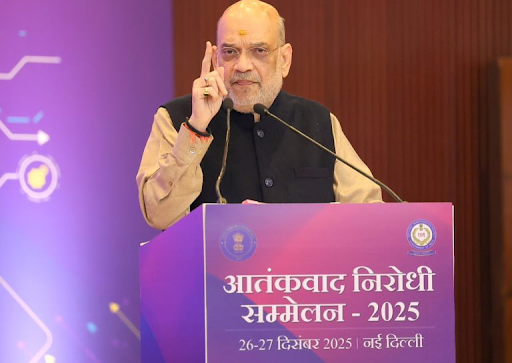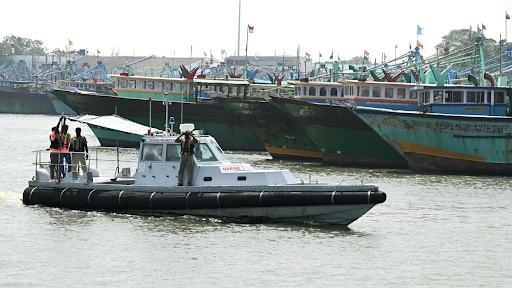




Source: HINDU
Disclaimer: Copyright infringement not intended.
The Advanced Medium Combat Aircraft (AMCA) is India’s flagship fifth-generation stealth fighter program developed to bolster the Indian Air Force’s future combat capabilities.
With the Defence Minister’s recent approval of an industry-competitive execution model the AMCA project has entered a crucial phase.
|
Feature |
Details |
|
Executing Agency |
Aeronautical Development Agency |
|
Manufacturing Bidding |
Open to HAL and private Indian firms, individually or in consortium |
|
Funding Approved |
₹15,000 crore by the Cabinet Committee on Security (March 2024) |
|
Objective |
Promote fair competition and increase indigenous manufacturing capacity |
|
Prototype Rollout |
Expected by 2028–29 |
|
Production Start |
Likely by 2032–33 |
|
Induction Target |
By 2034 |
|
Category |
AMCA Specifications |
|
Class |
25-tonne fifth-generation stealth multirole fighter |
|
Engines |
Mk-1: GE F414; Mk-2: To be co-developed with Safran (France) |
|
Stealth Features |
Internal weapons bay, RAM coating, diverterless supersonic intake (DSI) |
|
Weapons Payload |
Internal: 1,500 kg; External: 5,500 kg |
|
Fuel Capacity |
Internal: 6,500 kg |
|
Technology |
AI-enabled avionics, AESA radar, sensor fusion, supercruise |
|
Multirole Capabilities |
Air superiority, deep strike, electronic warfare, suppression of enemy air defences (SEAD) |
|
Aspect |
Significance |
|
Level Playing Field |
HAL will not have automatic manufacturing rights; must compete with private firms. |
|
Private Sector Role |
Encourages domestic aerospace innovation and scale-up under Atmanirbhar Bharat. |
|
Boost to Indigenous Capacity |
Utilizes India's design expertise and manufacturing infrastructure jointly. |
|
ADA’s Role |
Will supervise the entire project, issue EoIs, and coordinate with manufacturers. |
|
Concern |
Implication |
|
China’s Two 5th-Gen Fighters (J-20, J-31) |
Enhances regional imbalance. |
|
China Supplying J-35s to Pakistan |
Adds to India's two-front threat. |
|
India’s Response |
Fast-tracked AMCA to ensure strategic parity. |
Fifth-generation aircraft represent the most advanced class of fighter jets designed to gain air superiority through a combination of stealth, agility, advanced avionics and integrated warfare systems.
These jets are a significant leap in technological sophistication over their predecessors (4th-gen fighters like the Su-30MKI or F-16).
|
Feature |
Description |
|
Stealth Technology |
Low radar cross-section using radar-absorbent material (RAM) and fuselage shaping. |
|
Supercruise |
Sustained supersonic flight without afterburners. |
|
Advanced Avionics |
Sensor fusion for real-time battlefield awareness. |
|
Network-centric Warfare |
Integration with satellites, drones, and ground assets for coordinated missions. |
|
Internal Weapon Bays |
Maintains stealth by housing weapons internally. |
|
High Maneuverability |
Thrust vectoring, fly-by-wire systems, and aerodynamic design. |
|
Situational Awareness |
Use of AI, helmet-mounted displays, and advanced radar like AESA (Active Electronically Scanned Array). |
|
Country |
Aircraft Name |
Notable Feature |
|
USA |
F-22 Raptor |
First operational 5th-gen fighter; air dominance |
|
USA |
F-35 Lightning II |
Multirole stealth fighter with global users |
|
Russia |
Su-57 (Felon) |
Stealth with super-maneuverability |
|
China |
Chengdu J-20 Mighty Dragon |
Long-range stealth interceptor |
|
South Korea |
KF-21 Boramae (4.5-gen but upgrading) |
Semi-stealth; future upgrades planned |
|
India |
AMCA (under development) |
Indigenous 5th-gen aircraft program |
Sources:
|
PRACTICE QUESTION Q. The Advanced Medium Combat Aircraft (AMCA) project is not just about air power but about India's ambition to become a self-reliant aerospace power. Discuss the significance of the recent execution model in this context. (250 words) |





© 2026 iasgyan. All right reserved